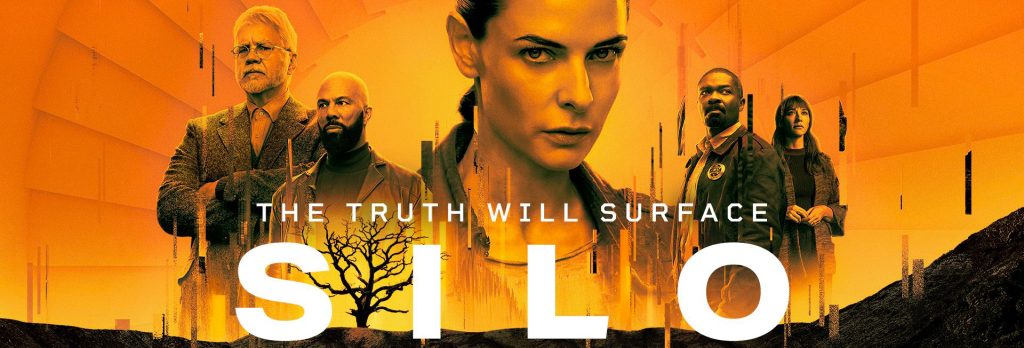I assumed six months ago that the KU payout terms would eventually change. I wasn’t sure if Amazon would go with a pay-by-page scheme or something that put works in tiers by length, but many observers knew this was a question of “when” and not “if.” Despite the overblown and horribly researched coverage in the wider press, the new payout terms fix a glaring discrepancy in how authors are rewarded for their efforts and how readers’ behavior will influence what is offered across Kindle Unlimited.
When I realized the change that was coming, I started concentrating on short stories. I began planning serials. I knew my time would be better spent mixing at least 6 to 12 shorter pieces in with each of my novels. In fact, I think most people analyzing KU and the length of works to offer are getting it wrong. KU does not reward longer works: It rewards good works. It rewards gripping works.
A lot of authors are going to make a huge mistake as they write with KU in mind. Chapters that would’ve been cut for being boring filler are going to be left in place, as writers now think they are being paid by the pound. Nothing could be more wrong. To understand why I stand to make more money with short fiction than with novels, a few different mental mistakes have to be corrected. Let’s go through each one:
The first mistake we make is to think that a system that was overly generous to short fiction, once corrected, is now punishing short fiction. This is absurd. The playing field is now level. A page read is a page read. Just because a system was unfair in one direction in the past (and it was) does not mean it’s unfair in the other direction now. In fact, short fiction still has some amazing advantages, which we’ll see in a moment.
The second massive mistake I see people make when discussing the new KU is to assume that the amount of work that goes into a novel and a short story is even close to the same. Because we were paid the same in the previous system, no matter the length, we’ve somehow lost sight of the very obvious truth that 60,000 words of writing is still 60,000 words of writing. If you package it as a novel, or if you release six 10,000 word short stories, you’ve still written and revised roughly the same amount. If the reader gets through all those words, you’ll get paid the same per hour of work.
So instead of comparing a 60,000 word novel with a writer who put out a single 6,000 word short piece, the fair comparison is to realize the second author probably released TEN works in the same amount of time.
Which brings us to the reality that everyone knows but no one will admit: Most KU downloads aren’t read to completion. Many are sampled. When the works feel free (I know there’s a monthly fee), there’s no guilt-induced pressure to finish any work. So a reader might grab four novels, try each, and then finish the one that grabs them. If you pad your novel, or open it slowly, thinking you’re going to get paid for every one of your 300 pages, and I write a 20-page short story that readers can’t put down and fly through, then which of us spent our time more wisely? And which of us provided the reader with a better customer experience?
A downside to short fiction is more cover art expenses. An upside is much lower editorial expenses. I see these as a wash. Plot can be so much tighter in short fiction that developmental editing is much reduced. And most writers can get 10,000 words largely error-free before sending off to a copyeditor. I find that editing a 60,000 word novel takes much more than merely six times longer than a 10,000 word short. And serialized works benefit from the re-use of cover art designs, so the cost there isn’t really six times as much (to stick with our hypothetical examples).
Then there are the two HUGE benefits to short fiction, both of which increase the chances of something taking off. The first is the visibility of having more works peppered across Amazon’s storefront (we’re talking KU, so keep in mind these works are exclusive). More works means more reader impressions. It means more recommendations from Amazon to customers. It also means writing six different stories, with different characters, and seeing which ones do the best, then writing sequels for those pieces.
![]() BEACON 23 took off for me in a pretty spectacular way, with lots of reviews, lots of call for sequels, and even the great Warren Ellis plugging the work in his latest newsletter. Likewise, GLITCH has been a fantastic seller. Other works have done okay but not nearly as well by comparison. And I can never guess which ones will do the best. But by writing lots of stories, I can invest my time following up with the worlds that readers found most alluring. Again, this means an improved customer experience and a more efficient use of my writing time.
BEACON 23 took off for me in a pretty spectacular way, with lots of reviews, lots of call for sequels, and even the great Warren Ellis plugging the work in his latest newsletter. Likewise, GLITCH has been a fantastic seller. Other works have done okay but not nearly as well by comparison. And I can never guess which ones will do the best. But by writing lots of stories, I can invest my time following up with the worlds that readers found most alluring. Again, this means an improved customer experience and a more efficient use of my writing time.
Yet another advantage: There is a massive bonus when readers finish your work. In the old KU system, the bonus seemed to have come if readers got to 10% of your work, which was when the per-unit payout was triggered. But now, the advantages to getting a reader through to the end of your story are compounded, because a finished work is more likely to be a reviewed work. Even if readers just star-rate the work, this will influence whether or not Amazon recommends them more of your titles. And word-of-mouth can’t get going unless readers complete a story and find the end satisfactory. This means my completed 20-page short story doesn’t just pay out the same as the first 20 pages of an abandoned novel — it also gets the bonus of completion, which the abandoned work doesn’t.
This doesn’t mean novels aren’t more fairly rewarded under the new system. Of course they are. And many readers want thick works that they lose themselves in for days and weeks. If you write that sort of work, you are going to do very well with the new KU. We should all be celebrating that (writers, readers, and the retailer). But the idea that novels are more powerful for the career writer than short stories simply doesn’t hold. The advantages of competent serialization and a wide mix of offerings are the same old advantages. The pay might not be skewed like it was, but the revenue per hour worked is probably still better for short fiction, and all the other bonuses of visibility, reviews, algorithms, diversity, and word-of-mouth still apply.
I’ll be very sad to see authors creating boxsets of their works, thinking that size now matters. I think they’ll lose opportunities this way. If there’s one story in there that will cause readers to pick up a different work, then you’ll miss the reward of them getting to the works that come after. And the readers will have missed out on the enjoyment. And Amazon will have missed a positive customer experience. But if those works are separate, then an abandoned read doesn’t hurt as much.
Another way to think about the new KU is this: You aren’t paid for every page read so much as you lose money for every page left unread.
For novel writers, this means thinking of every scene as its own short story. It means thinking of every chapter as its own separate work. Does the world-building power readers forward? Does the tension tug them along? Do the characters come alive and chase readers all the way to the end? If any part of the story is weak, then get rid of it. Delete it. Or your novel will be like an anthology with a story no one can finish sandwiched in the middle. You run the risk of all the hard work that comes after being for naught.
Make no mistake, KU now rewards one thing, and one thing only: Reader enjoyment. This is how it should be. We aren’t writing by the pound; we are writing by the pulse. It’s hearts that we should concentrate on pounding, not keyboards. Write well and write efficiently. Write what you want. There’s a good chance there are more readers out there just like you, looking for the same thing.



Leave a Reply